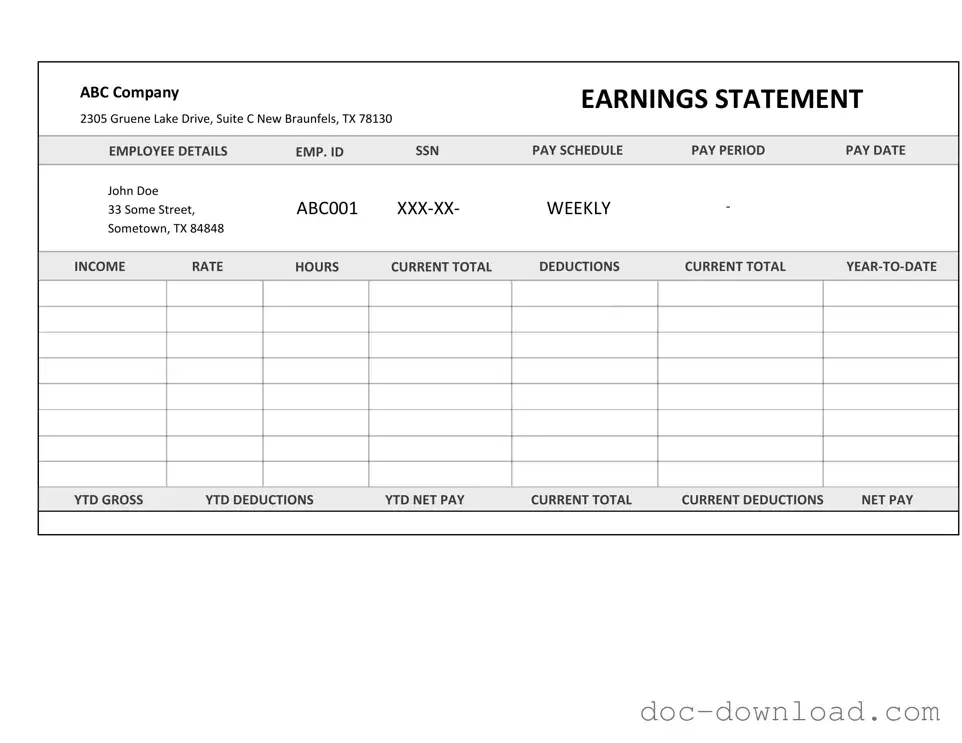The Independent Contractor Pay Stub form shares similarities with the Employee Pay Stub. Both documents serve to provide a detailed breakdown of earnings for work performed. They typically include information such as hours worked, pay rate, and deductions. While the employee pay stub is designed for traditional employees, it often highlights tax withholdings and benefits that independent contractors may not receive. This distinction is crucial, as it emphasizes the independent contractor's status and the nature of their compensation.
Another document akin to the Independent Contractor Pay Stub is the Invoice. Independent contractors frequently use invoices to bill clients for services rendered. Like pay stubs, invoices detail the amount owed, the services provided, and payment terms. However, invoices typically do not include deductions or tax information, as they focus solely on the transaction between the contractor and the client. Understanding both documents is essential for maintaining clear financial records.
Understanding the various documentation involved in property transactions, like the Georgia Deed form, is crucial for anyone navigating the real estate landscape. While independent contractors and employees deal with their respective pay stubs and 1099 forms, a Georgia Deed form functions within a different realm of legal documentation. It provides a definitive record of property transfer, much like how pay stubs demarcate earnings. To access important forms related to property transfers, you can visit Georgia PDF Forms, ensuring you have the necessary tools for secure and recognized transactions.
The 1099 form is also similar to the Independent Contractor Pay Stub. This tax document is issued to independent contractors by clients who have paid them $600 or more in a calendar year. While the pay stub provides a snapshot of earnings for a specific pay period, the 1099 summarizes total earnings for the year. Both documents are critical for tax reporting, but the 1099 is specifically designed for reporting income to the IRS, making it vital for compliance.
Lastly, the Payment Receipt shares characteristics with the Independent Contractor Pay Stub. A payment receipt is given to clients after payment has been made, confirming the transaction. It usually includes the amount paid, date of payment, and services rendered. While the pay stub focuses on earnings and deductions from the contractor's perspective, the payment receipt is more about acknowledging the completion of a financial obligation from the client's side. Both documents serve as essential records for financial accountability.
